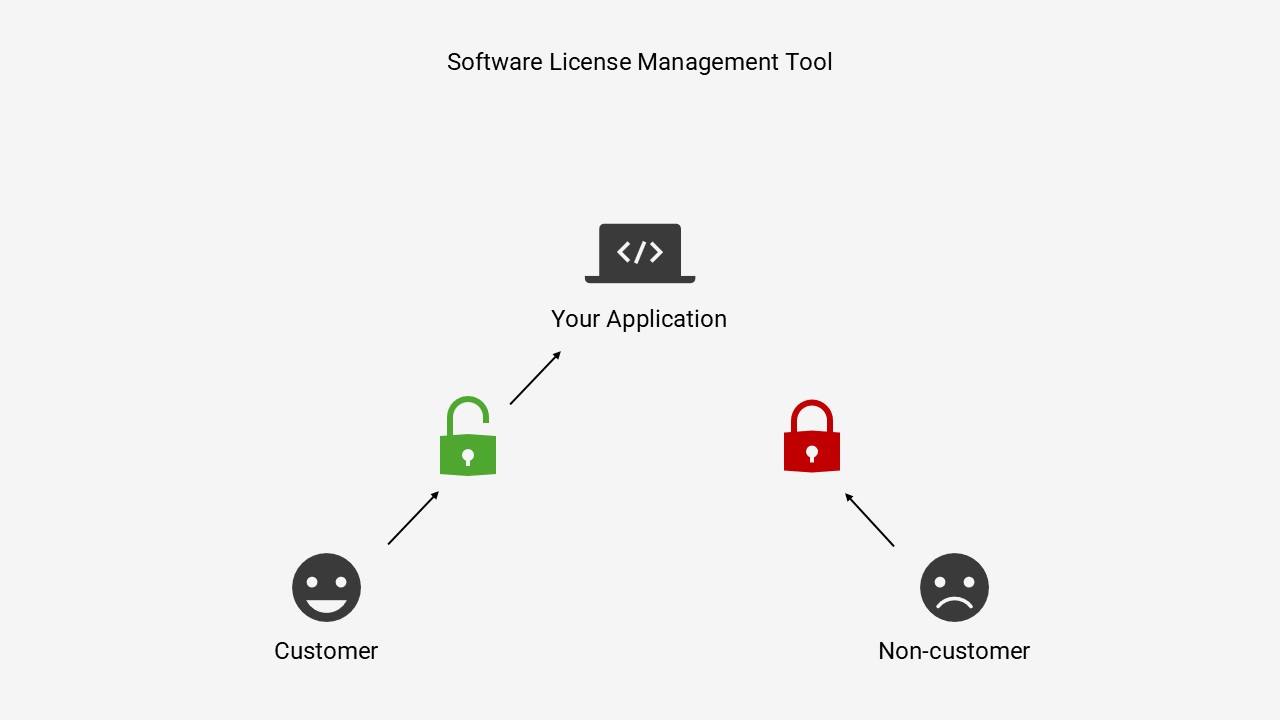How to Find the Best Software License Management Tool in 2024
What is the best software license management tool? Well, the answer to that question is very dependent on your unique licensing requirements. In today’s blog, I will highlight the main aspects you need to consider when searching for the best provider for your application!
If you’d rather watch a video on the topic, please watch this one:
How to Find the Best Software License Management Tool in 2024
First of all, what do I mean when I say software license management tool? I am referring to a service provider that helps you create a software licensing system to protect and sell your software application.

When you are choosing between different Licensing as a Service (LaaS) providers, I would advise you to first list your licensing requirements. Will you, or are you, selling your application to businesses or private consumers? What licensing models are you interested in? What integrations with other business systems do you require, and how important is scalability to you? We will cover all of these questions in more detail today.
B2B and B2C Applications
Let’s start with the first question. Many LaaS providers set a limit to how many license keys you are allowed to create on each pricing tier. As a result, it can get quite expensive if you are selling a lot of licenses at a cheap one-time price, which is quite usual for B2C companies. If you are selling B2B, you will probably require fewer license keys, and you are less price-sensitive since you most likely will sell each license key at a high price, maybe even a recurring subscription fee.
Licensing Models
That brings me perfectly on to talk about the next consideration, which relates to licensing models. Most LaaS providers will give you the basic licensing models such as the perpetual and subscription models. This is usually fine if you are selling B2C, but for B2B companies, you might benefit from other models, such as floating, or node-lockled licenses to allow for multiple seats. Maybe you even need licensing to work in an offline setting.
The more advanced licensing models can come at an extra cost with some providers, so make sure to check that your provider is able to accommodate your chosen licensing model. If you are unsure about what licensing model you want to implement, you can check out this blog post.
Integrations and Scalability of the Software License Management Tool
The last point I want to mention is related to scalability. You of course need to investigate what integration capabilities you need from a licensing provider today, but you also need to have a more long-term perspective. Today, you might be fine with manually creating license keys in the LaaS dashboard, but when you get more customers, you might want to automate the process using, for example, Zapier. At some point, you might even want to invite more employees to work in the dashboard. It is then good to check if your licensing provider is able to supply you with the integrations and features you need to allow for future growth.
Cryptolens Software License Management Tool
Lastly, with all of these considerations, choosing the correct software license management tool can be tricky. Especially when it comes to scalability since it can be difficult to predict exactly what your licensing needs will be in 5 to 10 years.
That is where Cryptolens comes in! We offer all licensing models and comprehensive implementation guides in your programming language. If your needs still exceed our capabilities, we are willing to tailor our product to your licensing needs. And the best part? You can get started with software licensing for free, within minutes.
Thank you for reading, Stay Smart!


